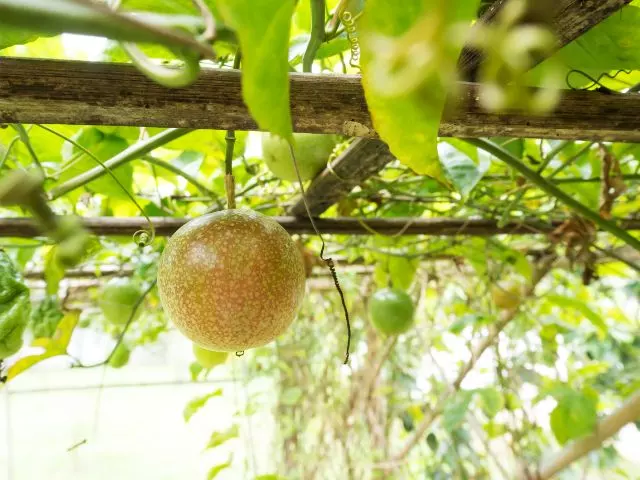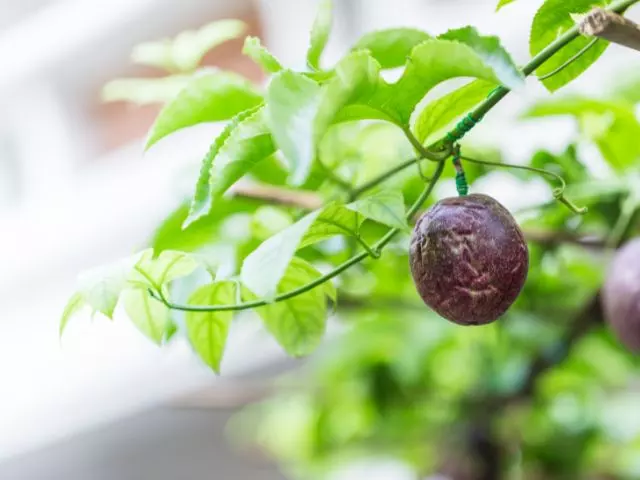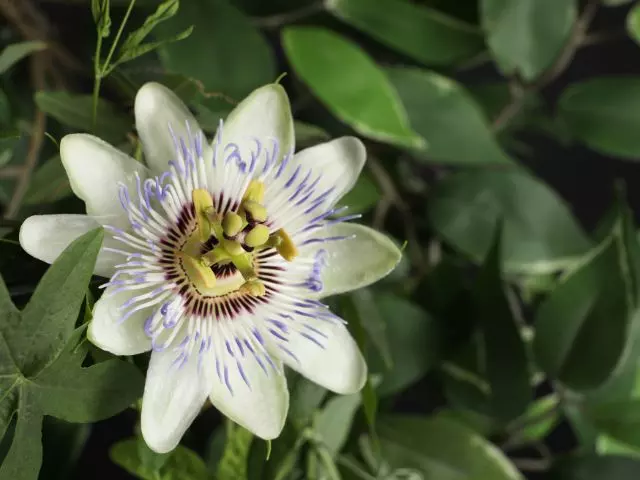Fertilizing your passion fruit vine is essential to ensure that it produces a healthy and abundant crop of fruit. Knowing when and how to fertilize your passion fruit vine can distinguish between a thriving vine and one struggling to survive. Continue reading to learn all about passion fruit fertilizer.
Fertilizing passion fruit vines will boost vine growth and production. That is why knowing the right time to fertilize passion fruit to get the best results is very important. Passion fruit vines are plants that need a lot of nutrients to develop and grow properly. This article will teach you all you need to know about passion fruit fertilizer.
Table of Contents
What Kind of Fertilizer for Passion Fruit
Passion fruit needs space and nutritious soil to develop properly. This plant, Passiflora edulis, has shallow roots and, with the proper nutrients, will produce quality fruits. Passion fruit needs soil with a pH between 6 and 7 for adequate development and nutrient absorption. Learn more about how to measure soil pH.
If the soil where the passion fruit is grown has a pH different from that required by the plant, it will likely not absorb nutrients well and will not develop correctly. That is why it is imperative to know the pH of the soil before starting to fertilize passion fruit.
An NPK 10-5-20 fertilizer is good for passion fruit. Passion fruit is a plant that needs a lot of potassium. If you do not know, NPK stands for Nitrogen, Phosphorus, and Potassium. So a 10-5-20 fertilizer means it has 10% Nitrogen, 5% Phosphorus, and 20% Potassium. The rest are other nutrients and minerals.

Best Fertilizer for Passion Fruit
A good fertilizer for passion fruit is an NPK fertilizer that contains a lot of potassium. For example, an NPK fertilizer 10-5-20 or 15-15-30. Passiflora edulis is a plant that needs more potassium than other nutrients.
As mentioned above, you must first know the soil’s pH to ensure it is correct for passion fruit. The passion fruit vine will absorb nutrients better and develop correctly with a proper pH.
For example, if the soil is too acidic, you should use lime to increase the pH. If it has a pH above 7 you can increase the soil’s acidity by adding sulfur. Then, correct the soil pH and re-measure after a few days. Correcting soil pH can be a slow process.
The best way to fertilize passion fruit is to use slow-release granular fertilizers. Usually, the fertilizer is applied and then watered abundantly. However, I recommend always reading the manufacturer’s instructions because the dosage and method may vary slightly.
- Not Available for Sell in WA, USA
- 1.5 Kg: Specially formulated for use on Passion Fruit trees.
- Promotes long-term vitality through robust root development.
When to Fertilize Passion Fruit
The best time to fertilize passion fruit is during spring. However, you can fertilize your passion fruit from early spring until the fruits are almost ripe for picking. Using a 10-5-20 or similar fertilizer will produce quality fruit. According to the University of Florida, a good time to fertilize passion fruit is after pruning.
I suggest using a low-nitrogen fertilizer if your soil has a high nitrogen content. Too much nitrogen will promote leaf growth and not flower and fruit growth. That is why it is essential to know the nutrients and pH of your soil before fertilizing passion fruit.
So, the best time to fertilize passion fruit is in spring. Avoid fertilizing during the rest of the year. The passion fruit vine will only properly utilize nutrients during spring and part of the summer.

How to Fertilize Passion Fruit Vine
About 90% of passion fruit roots locate deep between 6″ and 9″ (15 cm and 50 cm). In addition, 70% of passion fruit roots are about 24″ (60 cm) from the trunk. Both factors are critical in knowing where to place fertilizer for good distribution to all roots.
Apply slow-release granular fertilizer around your passion fruit. First, spread it around the passion fruit vine and then water it so it begins to absorb the nutrients properly. These directions are for a slow-release granular fertilizer. Still, it is best to read the manufacturer’s recommendations for your fertilizer.
As I mentioned before, the most important thing is to use an NPK fertilizer with high potassium content and apply it during the spring, which is the time of development of the passion fruit plant. This way, the passion fruit plant will absorb the nutrients correctly.

Final Conclusions
The passion fruit is a beautiful plant that will dazzle you with splendid flowers and tasty fruits. For the correct development of the passion fruit, applying fertilizer correctly at the moment of the plant’s growth will be fundamental.
This article will clear all your concerns about how and when to fertilize passion fruit correctly. I recommend you read our article about pineapple fertilizer: how and when to fertilize.



mine vine produced flowers once and fruit, but nothing has bloomed since. what can I do to get more flowers?
Hi Chris. Have you ever fertilized the plant? If so, what type of fertilizer did you use? This will help determine if it has the necessary nutrients. Additionally, have you tested the soil’s pH?